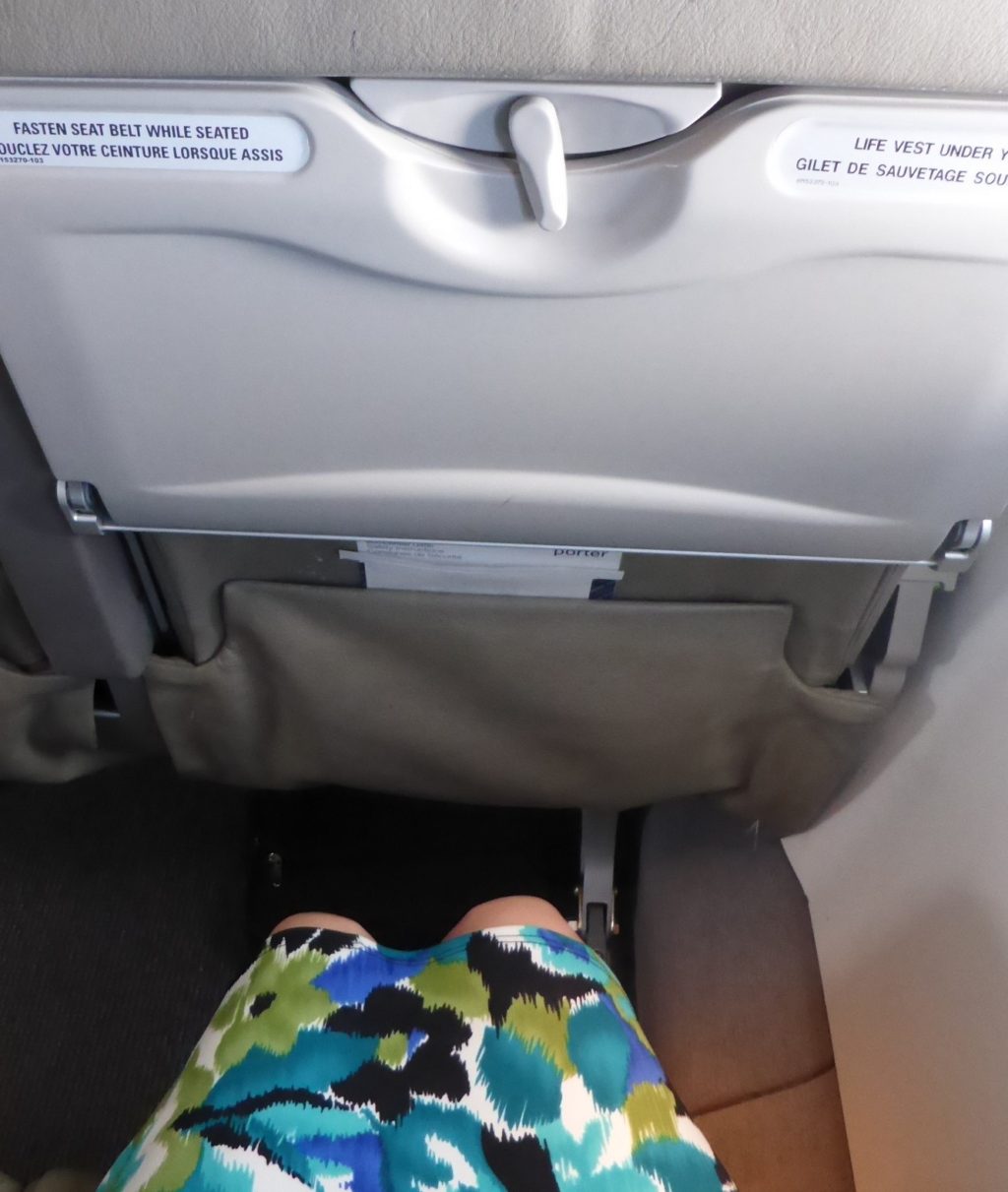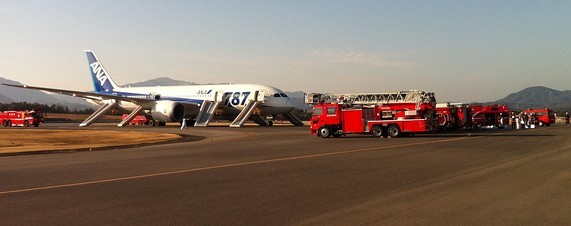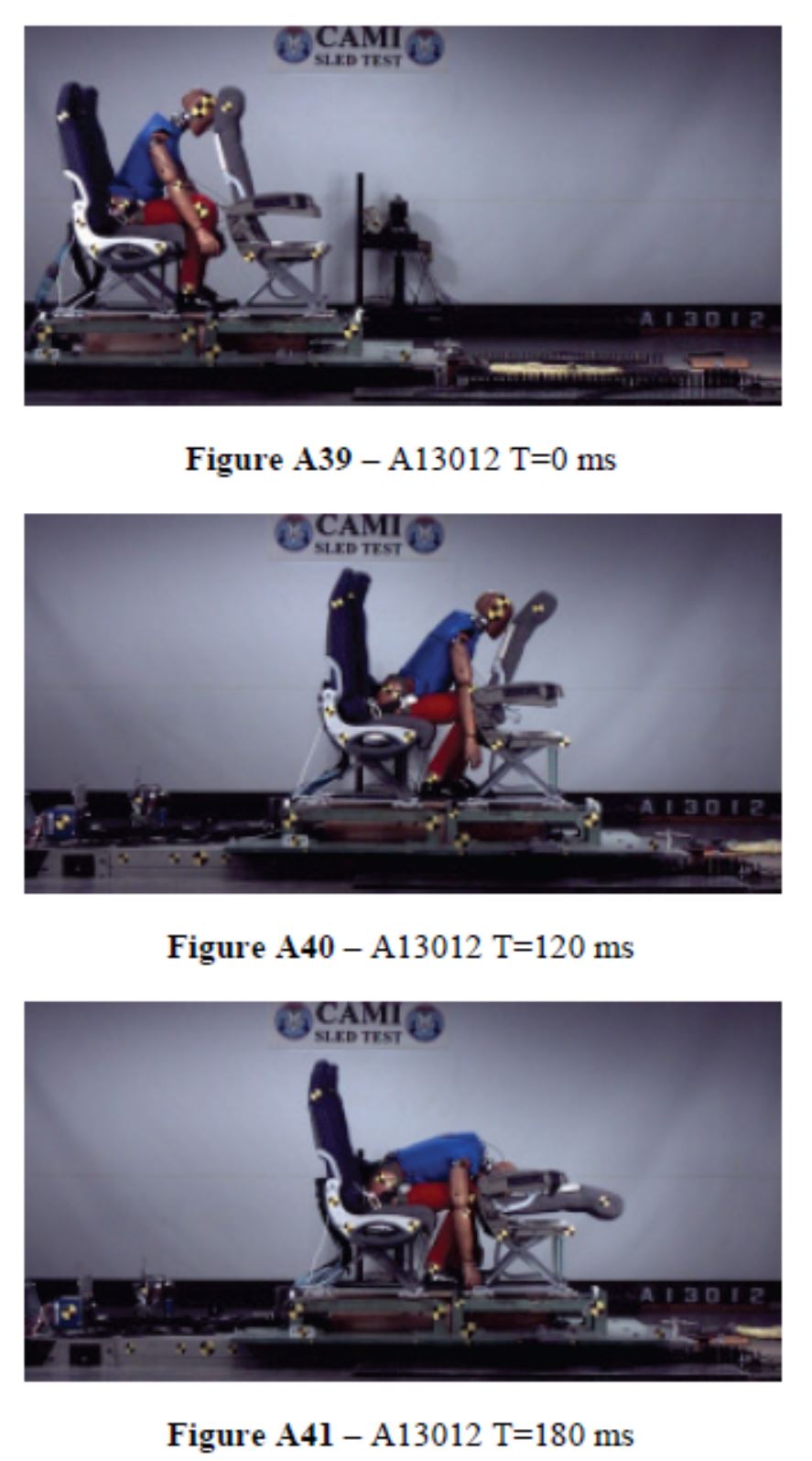
The Federal Aviation Administration on Tuesday turned down a request that it take a look at the safety implications of the shrinking airline seat. In a letter to Paul Hudson from FlyersRights.org, the FAA said it had no reason to believe that smaller seats and larger travelers is an unsafe mix when it comes to emergency evacuations.
Flyers Rights had claimed that large passengers would slow evacuations as they try to extricate themselves from the smallest of economy class seats in an emergency. But the FAA challenged the assumption. The time it takes for passengers to get out of their seats is less than the time it takes flight attendants to get the exit doors opened. The agency said it has no reason to believe passenger size has slowed evacuations.
 The economy class seats on many airlines are pitched at either 29 or 30 inches – measuring from the seat of one row to the back of the seat in front. The really snug 28 inch pitch seats can be found on airlines like Spirit, Thomas Cook, Frontier and Iberia. The FAA’s technical specialist Jeffrey Gardlin testified that if a passenger can get into a seat, he or she can get out of it as well.
The economy class seats on many airlines are pitched at either 29 or 30 inches – measuring from the seat of one row to the back of the seat in front. The really snug 28 inch pitch seats can be found on airlines like Spirit, Thomas Cook, Frontier and Iberia. The FAA’s technical specialist Jeffrey Gardlin testified that if a passenger can get into a seat, he or she can get out of it as well.
There are two issues, however, that the FAA does not address well in its decision and a third matter that was never part of the Flyers Rights petition, though it should have been.
First, much of the agency’s “if its not broken, don’t fix it argument” is predicated on the evacuation tests conducted by airplane manufacturers. Airbus, Boeing and Embraer provided videos of these tests for release to the public. They show volunteers wearing their seat numbers on their chests, patiently waiting for the signal to spring up and race out of the airplane. The number to beat is 90 seconds for everyone to be off the plane.
Nothing about the videos suggest the normal panic I’ve been told about by real passengers who have experienced real emergencies. Nor do these tests square with the delays and distractions caused by passengers who stop to retrieve their bags or begin live tweeting of their ordeal.

Gardlin did try to factor that in, taking a look at seven actual evacuations in the US, Japan and Peru and noting that in none of those events, was seat pitch cited as a delaying factor in the evacuation. Then again, there’s no indication that any of the planes had seats spaced at 28 or 29 inches. We also do not know if seat size hampering evacuation was even a question asked of the survivors.
Where I think Flyers Rights went wrong is isolating the safety question to evacuation delays only. There is another more clear-cut hazard associated with increasing human heft being wedged into smaller airplane seats.
As I reported for The New York Times a few years ago, the crash test dummies used to certify the strength and reliability of seat safety devices, are considerably lighter than the average traveler. You can read the story here, but suffice to say, the experts said the FAA can’t know if belts, seats and attachment hardware will stand up to passengers who weigh more than the what the seats have been tested for.  Further, when a heavy passenger breaks the seat restraints, they become a impact hazard to those nearby. It is interesting to note that in 2015 when the FAA conducted new research on the most effective brace position, it used a crash test dummy 20 pounds lighter than the average American male.
Further, when a heavy passenger breaks the seat restraints, they become a impact hazard to those nearby. It is interesting to note that in 2015 when the FAA conducted new research on the most effective brace position, it used a crash test dummy 20 pounds lighter than the average American male.
While travelers aren’t likely to get any smaller, in the FAA decision, Gardlin did make the reassuring statement that in order to comply with regulations about minimum space between seats, 27 inches would probably be as tight as any airline could legally go.
So when it comes to size, airplane seats may have reached bottom.

Author of The New York Times bestseller, The Crash Detectives, I am also a journalist, public speaker and broadcaster specializing in aviation and travel.









Thanks, Christine. Is any research being done in this area for helicopters that operate for offshore O&G? I am sometimes faced with similar situations where XXL size pax want to occupy a window seat and I am not too sure about their nimble response to an emergency evacuation or ditching at sea.